
Accuracy International AXMC338 Rifle
THE STORY OF .338 LAPUA MAGNUM – FROM AN AMERICAN DREAM TO A FINNISH SUCCESS STORY. (From www.lapua.com) –
This story enlightens the history of the .338 Lapua Magnum from a Finnish point of view. The purpose is not to chronologically list events or present the current .338 Lapua Magnum cartridge.
The birth of the .338 Lapua Magnum dates back to 1982, when an American company research armament industries, RAI (Rogers, Arkansas) was asked by the United States marine forces to develop a long-range rifle for sniper applications. RAI was a relatively small company, owned by late Jerry Haskins, operating mainly in the field of defence technology projects. Officially the project was to develop a target rifle for 1000 yards, but in reality the purpose was more likely to develop a 1500 m sniper rifle.
Haskins developed a prototype for an extremely simplified target rifle, which still today is known in some connections as the Haskins rifle. Frame shaped stock, barrel and short cylindrical front stock were connected into steel action frame. The bolt was fitted into the sleeve with three lugs located at the rear of the bolt and action frame, to which the caliber was easy to switch. Haskins patented the constructional solutions (us pat. 3 494 216).
The rifle had a special construction, and in a way it was very significant: it was the first target rifle designed for military target shooting. The previous military and police force rifles were either modified hunting rifles or regular military rifles equipped with optics. The .50 caliber version of the Haskins rifle is still being manufactured in the United States (aurora tactical). Haskins designed two versions of the rifle: the model 500 for the .50 BMG cartridge and the model 300 for the .300 Winchester magnum cartridge. In the .300 Win Mag. version, the caliber could be changed for the .308 Win cartridge by just switching the barrel and the bolt head.
However, the .300 Win. Mag. Cartridge did not fulfil the Army penetration requirements, so the search for a new RAI 300 caliber with better ballistic properties and heavier bullet started. The first option was to test a wildcat made from the .378 Weatherby magnum case, necked down for the .338. It was soon found out to be an unsuitable solution because the low body tapering and belted case construction. Case got stuck into the chamber and the construction caused inappropriate feeding. The next parent case was a rimless .416 Rigby, which was used mainly as a big game hunting caliber. Cases were manufactured by an American Brass Extrusion Laboratories Ltd. (Bensenville, IL), better known as BELL, after the owner Jim Bell´s last name. The new cartridge was based on a BELL .416 basic, which was used mainly as a parent case for wildcat cartridges. The .416 case was necked down to a .338 bullet. A new caliber was born, known as .338/416 or 8,58×71. Haskins would have liked Sierra, known by their accurate bullets, to manufacture these cartridges, but at the time sierra was not interested in the project. Hornady came into the picture, and designed and manufactured a 250 grs HPBT target bullet for the cartridge. The bullet was not a standard bullet, and has not been on their product list.
THE FINNISH CHOICE
Neither the Hornady bullet, nor the bell .416 basic case fulfilled all the requirements set to them. According to hear-talk one problem was that the Army was willing to accept only Sierra or Lapua bullets. When the deadline to deliver weapons and ammunition to the United States Army tests was getting closer and closer, RAI started to seek for other manufacturers. A Finnish Lapua cartridge factory was found through their US representative, Kendall International, and in the summer of 1984 Lapua was linked to the fate of the .338/416 cartridge.
Development for both .338/416 case and .338 caliber full metal jacket bullets were started. An all new caliber was a challenge for both the product development department and production, but things moved on forward rapidly, and the first bullets and cases were ready for shipment to the United States Army testing in the beginning of 1985.
Lapua´s first .338 caliber bullet was the B408, which in 1985 looked more like a steroid fed D46 than the current type. The base for the construction at the time was no doubt due to the construction of full metal jacket bullets of that time and age. The current lock base construction only came into the picture later.
In 1986 the .338/416 cartridge, with a Lapua bullet and case, won the 1000 yard navy rifle competition in Quantico, Virginia. In spite of that, the U.S. Army selection criteria went their own ways, and during 1986 the general situation started to be clear: the U.S. Army would choose only Haskins .50 BMG caliber rifles, and not the .338/416. The RAI 500 rifles had been tested in real action in Beirut and Grenada. Even though the .50 BMG caliber rifle offered in addition to its weight also exterior and target ballistic performance, the criteria for the decision more likely lies in the fact that the .50 BMG had been in production for decades, and matching supplies were manufactured by several manufacturers in the United States and elsewhere, and it was already part of the United States Army supply selection. The .338/416 for its part was an unknown newcomer.
After the result of the United States Army selection, RAI, with financial difficulties, became part of the Iver Johnson´s weapon company´s military sales company American Military Arms Corporation (AMAC). However, Iver Johnson got into financial problems and rearrangements in the 1980´s. The Haskins rifle floated elsewhere.
In addition to RAI, weapons for the .338/416 were manufactured (or subcontracted) by Lapua’s distributor Kendall. Kendall´s rifles, called Keberst, were usually built around the MKV actions. Matching actions were sparse, and for example in the new continent very common Remington 700 action was too small for this cartridge. In Finland the first test rifles were built around Sako l61 actions, and at least one Weatherby Mk.V action based rifle found its way to Lapua in Finnish Ostrobothnia.
MORE PRODUCT DEVELOPMENT
With the American manufacturers out of the picture, Lapua was left more or less alone with the new caliber cartridge, with basically no weapon manufacturers. The management still decided to continue the development of the product. This resulted in specifying the measurements, and the cartridge was named the .338 Lapua Magnum. The biggest difference to the 8.58x71mm cartridge was that the new .338 Lapua Magnum was now almost 2 mm shorter than RAI´s draft case, and also the powder space volume in the .338 Lapua Magnum was 1mm shorter. The 8.58×71 did not fit to the 8.6×70 (.338 Lapua Magnum) chamber anymore without a steady snap of a hammer.
Also the interior structure of the case was redesigned to withstand higher chamber pressures than the original, designed for rarely low pressures, modification of the .416 Rigby could have withstood. So, the .338 Lapua Magnum was in fact a new Finnish cartridge, even though the idea was born on the other continent.
The reason for the .416 Rigby case being a good prototype and parent case, but not the actual choice for the new caliber case was quite clear. For the .338/416 cartridge, the velocity of a 16,2 g bullet was 915 m/s. A completely different case designed for a higher pressure level was clearly needed. The original Rigby .416 case had a rough 3,000 bar pressure case. The new cartridge was designed for over 4,000 bar pressures. The original pressure definition based on the deformation of the copper pellet method – the crusher method – was specified in the beginning into 56,000 cups (about 3900 bar). When CIP moved to the piezo transducer period, a mistake was made somewhere resulting in the pressure medium for .338 Lapua Magnum to stay in the 4700 bar level, even though the correct level is in the 4,200 bars.
The .338 Lapua Magnum was clearly not a hunting caliber, even though it fit the purpose in long ranges. It was a cartridge developed for long range competition and military target shooting with trajectory and bullet penetration qualities superior compared to the usual .30 caliber cartridges. The .338 Lapua Magnum profiled as a target cartridge, even though some manufacturers also made hunting rifles for it.
The loading techniques were also developed at Lapua. A powder load of almost 6 grams of slow burning powder needs a powerful and unfailing ignition by large rifle magnum primer. The first testing lot of the .338 Lapua Magnum was produced in 1988. A motion had however been made for CIP in 1987, and in 1989 the .338 Lapua Magnum was CIP approved with its measurements.
In addition to the loading techniques new bullets were also developed for the new cartridge and its requirements. In the 1980´s, Lapua also developed a full metal jacket bullet which was different from the traditional construction. The lead in the tail of the bullet was protected by the jacket, with the exception of a small center. This construction, later known as the lock base, was patented in 1990. The starting point for the development were tests that clearly demonstrated that covering the lead in the bullet tail clearly makes the bullet more accurate. The original tail design B408 from 1984 was modified to lock base type, and the B408 got its current shape. The weight of the bullet remained in 16.2 grams. The first soft point bullet was MIRA, streamlined from the mega bullet. The 16.2 gram EB431 bullet was introduced commercially with the new cartridge in 1990.
The HPBT type Scenar bullet was introduced later, in 1996. The 16.2g GB488 was not the first member of the Lapua Scenar family, it was already introduced in 1987. Hollow point target bullets had been designed at Lapua earlier already, the first one, a 6.5mm HPBT bullet, had been designed during the 1960´s.
Different kinds of special purpose equipment were also tested: armour piercing, armour piercing incendiary, solids and a sub-caliber projectile were examples of the tested solutions.
COOPERATION PARTNERS
The new cartridge started raising interest also on the old continent. The chambering of the .338 Lapua Magnum into any action was not without problems since the case was thicker than the usual magnum cartridge cases and needed a wider action frame and a thicker bolt. Matching actions were not common in the 1980´s. One of the first manufacturers to take action was the German Mauser, which manufactured a .338 Magnum caliber version of their SR93 rifle. During 1988 Lapua started cooperation also with Sako. The TRG rifle did not yet exist, but the largest Sako action at the time, the l61, was used for the tests. Sako manufactured test barrels, and after the tests internal ballistic facts were available. Based on those tests the .338 Lapua Magnum caliber barrels are designed even today. It is not necessary to use a short barrel with the .338 Lapua Magnum or other calibers using a relatively large loading of slow burning powder. The barrel needs to be long enough to reach optimized performance: optimal velocity and best possible accuracy.
The primary rifle manufacturer ended up to be Accuracy International, owned by Malcolm Cooper in Great Britain. Cooper was a successful rifle shooter, who had several championships and medals in high quality competitions, two Olympic gold medals to mention some. A unique feature with Cooper´s success was that for part of his career he shot with rifles he had designed and manufactured himself. In the 1980´s Accuracy International started to develop a military use target rifle for the needs of the British Army. In addition to the British Army, the Swedish defence forces were also looking for a new sniper rifle, and chose the Accuracy International rifle before the British did. The Swedish touch stayed in the construction of the rifle, since it was designed with winter conditions in mind. For both armies the caliber was not .338 Lapua Magnum, but 7.62 mm NATO. The 7.62 mm NATO was also given a commercial name, “arctic warfare”.
The “arctic warfare” cooperation between Accuracy International and Lapua did not start with the .338 Lapua Magnum, but with Malcolm Cooper having had been Lapua ‘s representative in Britain earlier, even winning some competitions with the Lapua cartridges. Accuracy International designed an all-new version for the new cartridge (and also 7 mm Rem. Mag. And .300 Win. Mag.) called super magnum.
The Accuracy International rifle became the first mass-production .338 Lapua Magnum rifle. Some time passed and the Sako TRG-41 followed. Two other Finnish manufacturers, Pirkan Ase and gunsmith Jyri Jalonen also introduced their .338 Lapua Magnum caliber target rifles, both of which are manufactured around their own actions.
In the 1990´s the selection started to be complete with Heym, Erma, McMillan, H-S Precision, AMP and Dakota rifles. In fact, every long range target shooting weapon manufacturer tried to offer a .338 Lapua Magnum caliber rifle. During the years, the .338 Lapua Magnum has received a steady foothold in many Western hemisphere armies and similar organizations. (Original Finnish text: Janne Pohjoispää)
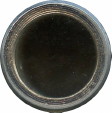

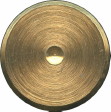
 Tool Dummies
Tool Dummies
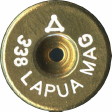 Atlas Development Group, Elizabethtown, KY
Atlas Development Group, Elizabethtown, KY
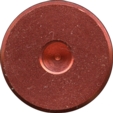
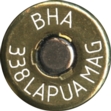
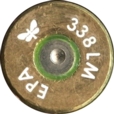 EPA Manufacturing Ltd. in the UK. EPA = Extreme Performance Ammunition. They have a very good website. (Thanks Fede and Vince Green)
EPA Manufacturing Ltd. in the UK. EPA = Extreme Performance Ammunition. They have a very good website. (Thanks Fede and Vince Green)
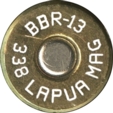
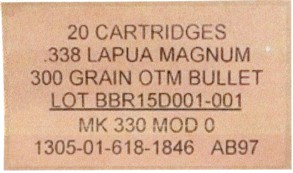
Barnes Ballistic Research. This is from Lot BBR15D001-001 for the Precision Sniper Rifle, US Special Operations Command (SOCOM). See attached copy of box label
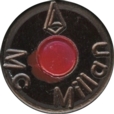
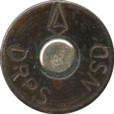 These are specimens manufactured by Gaetane Lepine in Canada. The second one was for the Durham Regional Police Service, Nuclear Services Division.
These are specimens manufactured by Gaetane Lepine in Canada. The second one was for the Durham Regional Police Service, Nuclear Services Division.
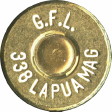
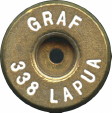
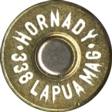
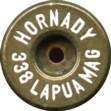
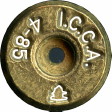
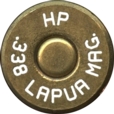

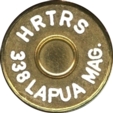 The HRTRS brand is sold by Cabela’s in the USA. It is manufactured by Sellier & Bellot in the Czech Republic.
The HRTRS brand is sold by Cabela’s in the USA. It is manufactured by Sellier & Bellot in the Czech Republic.
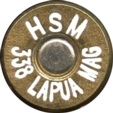 Hunting Shack Ammunition, Stevensville MT. Focus is mainly on Law Enforcement/Military. You can have a look at the website HERE.
Hunting Shack Ammunition, Stevensville MT. Focus is mainly on Law Enforcement/Military. You can have a look at the website HERE.
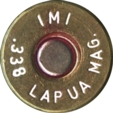
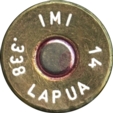 Israel
Israel
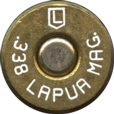
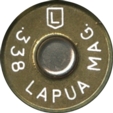
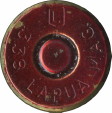
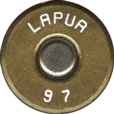
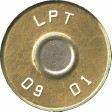
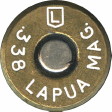

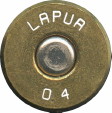

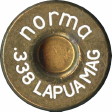
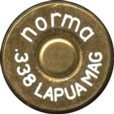
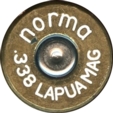
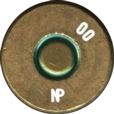
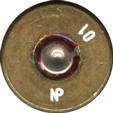
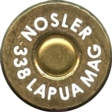
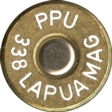
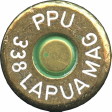
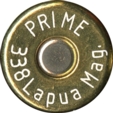
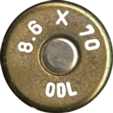 Ordance Development Ltd, NZ
Ordance Development Ltd, NZ
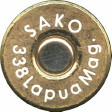
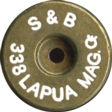
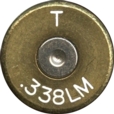
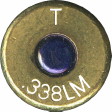
 Subsonic load
Subsonic load
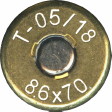

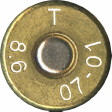

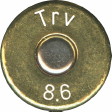
 Truvelo South Africa
Truvelo South Africa
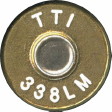
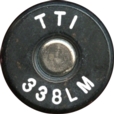 Triox Technologies Inc. ca 2006
Triox Technologies Inc. ca 2006












Last specimen shown is the Lepine steel case with headstamp <L> DRPS NSD
